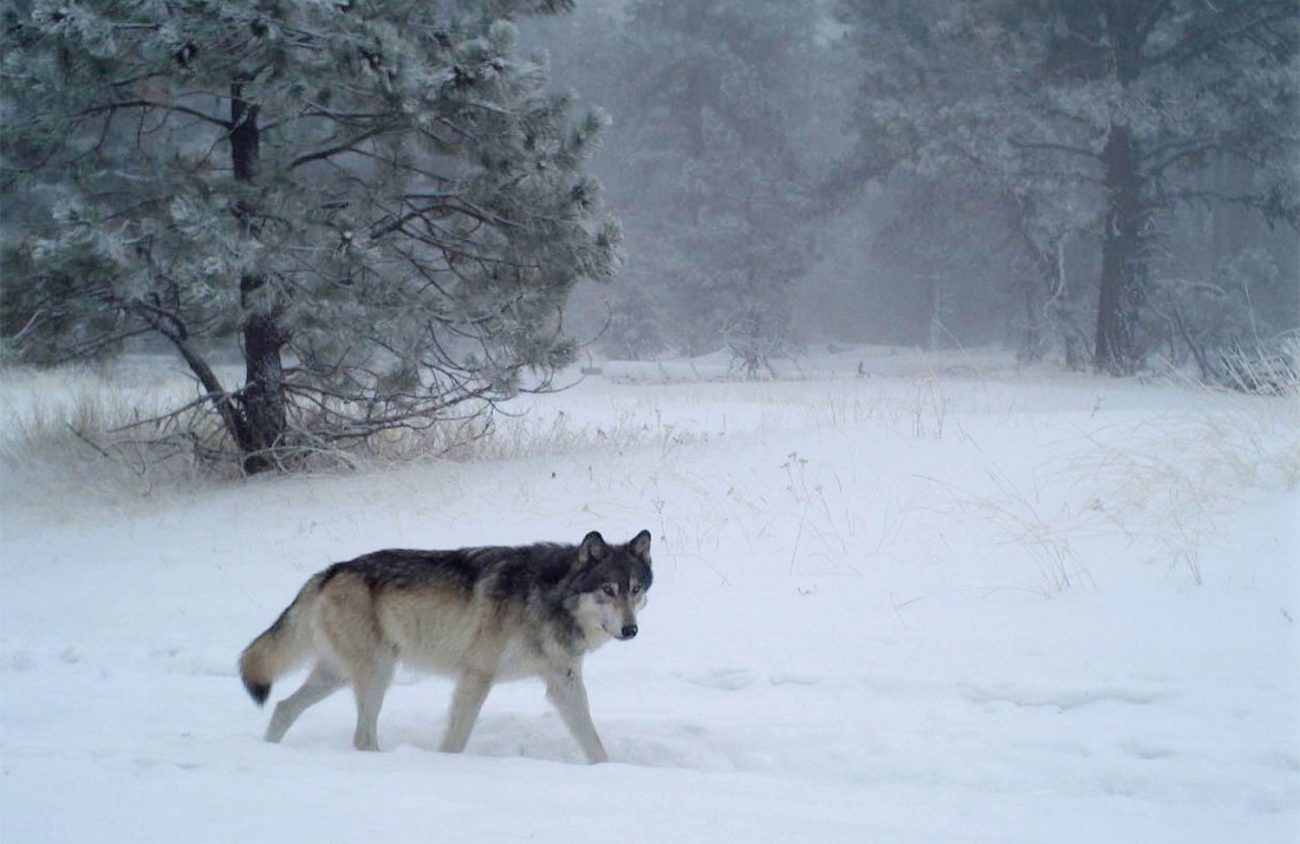Commissioners for the Oregon Department of Fish and Wildlife voted June 7 on an updated wolf plan that allows members of the public to be granted permits to kill wolves.
The wolf plan was controversial long before the vote. Back in January, four environmental groups notified Gov. Kate Brown and the state’s Fish and Wildlife Commission that they were withdrawing from stakeholder meetings on the management of Oregon’s wolf population.
Oregon Wild, Cascadia Wildlands, Center for Biological Diversity and Defenders of Wildlife said in a Jan. 4 letter that “it is clear the agency’s intention is to find ways to kill wolves faster, not prioritize conflict prevention through non-lethal measures.”
Arran Robertson, communications manager for Oregon Wild, says of the new plan, “We are OK being quoted as calling it a pile of shit.”
Robertson and Danielle Moser, the group’s wildlife coordinator, say that in addition to the concern that conflict prevention was not given a priority, two other big issues they say were “for the most part discarded” in the plan are how low the threshold is for killing wolves and the opening of the door for hunting wolves.
Congressman Peter DeFazio shares the latter concern. He tweeted out on June 8: “Yesterday, ODFW approved a plan to allow untrained hunters to assist in predator control measures, giving Wildlife Services even more unchecked authority than they already have. This plan puts both animals and humans at risk, and I stand firmly in opposition to it.”
Under the new plan, the state can kill wolves in Oregon after two confirmed attacks during a nine-month period. Previously, lethal measures could only be taken on Oregon’s eastside and there was not a set time period for the attacks.
Oregon’s first wolf plan was written in 2005, before wolves had returned to the state, and updated in 2010. There are now about 137 wolves in Oregon, most of them in the eastern portion of the state. Wolves are native to Oregon.
In a news release the Fish and Wildlife Commission, referring to hunting as “controlled take,” says, “Use of controlled take as a management tool requires commission approval through a separate public rulemaking process” and “the definition of controlled take was modified.”
ODFW also says “non-lethal measures to prevent wolf-livestock conflict continue to be emphasized” and are “required before any lethal control is considered.”
A spokeserson for Brown tells Eugene Weekly “As she communicated to the director of ODFW last month, the plan should give no member of the public the opportunity to hunt wolves. But as approved, the wolf plan opens the door to that possibility.”
Robertson says in response to the governor’s misgivings, “If you don’t like it, what are you going to do about it?”
He adds, “If she doesn’t do anything about it, then it shows that she can just be rolled by her own agency.”
ODFW says the full plan will be posted at dfw.state.or.us/wolves.
Gov. Brown’s entire statement is below:
Governor Brown believes that we must protect our historic and natural heritage in Oregon. Wolves are part of the landscape, and as their numbers increase and stabilize, we must ensure that Oregon has an effective plan to protect and continue to grow Oregon’s wolf population. Since grey wolves may be federally delisted, it is important more now than ever that Oregon has a strong plan to carry us forward until 2025.
Governor Brown was clear in her expectations to the agency and the commission: ODFW has a conservation-focused mission. Efforts in the wolf plan to evaluate depredations and prevent them fail to meet the Governor’s expectations for ensuring the health of the wolf population while also meeting the needs of the ranching community. And as she communicated to the director of ODFW last month, the plan should give no member of the public the opportunity to hunt wolves. But as approved, the wolf plan opens the door to that possibility. The agency has a mandate and funding to advance Oregon’s conservation efforts as they manage and monitor wildlife population, and this wolf plan falls short of those expectations.
